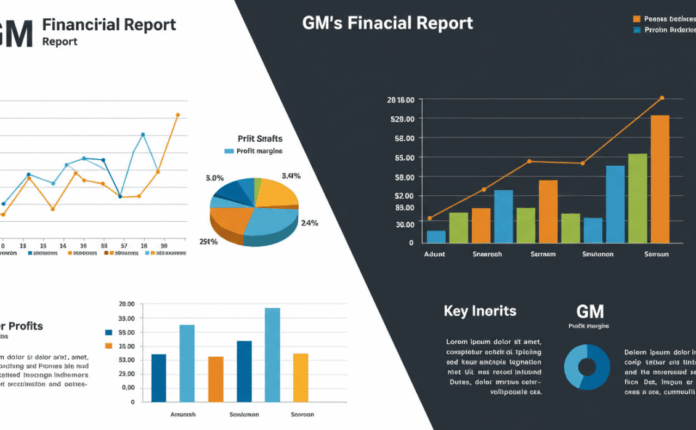In today’s fast-paced, ever-evolving business landscape, adaptability is no longer a luxury—it’s a necessity. Markets shift, consumer preferences change, and technological advancements reshape industries overnight. Businesses that thrive in this dynamic environment are those that embrace change, anticipate trends, and pivot with precision. This article explores how companies can navigate uncertainty, leverage innovation, and maintain a competitive edge in a constantly shifting market. From adopting cutting-edge technologies to fostering agile mindsets, we’ll dive into actionable strategies that empower businesses to not just survive but flourish.
Why Adaptability Matters in Today’s Market
The Pace of Change in Modern Business
The modern market moves at breakneck speed. Global events, economic fluctuations, and technological breakthroughs create a volatile environment where businesses must act swiftly to stay relevant. For instance, the rise of e-commerce transformed retail in less than a decade, forcing traditional brick-and-mortar stores to rethink their strategies. Companies like Blockbuster, which failed to adapt to the streaming revolution, serve as cautionary tales. In contrast, businesses like Netflix, which pivoted from DVD rentals to a digital-first model, demonstrate how embracing change can lead to unprecedented success.
The Role of Consumer Expectations
Today’s consumers are more informed and demanding than ever. They expect personalized experiences, seamless interactions, and products that align with their values, such as sustainability or inclusivity. Businesses that fail to meet these expectations risk losing loyalty. For example, brands that integrate real-time customer feedback into their operations can tailor offerings to meet evolving needs, fostering stronger connections. Adaptability in understanding and responding to consumer behavior is a cornerstone of long-term success.
Key Strategies for Thriving in a Dynamic Market
Embracing Technological Innovation
Leveraging AI and Automation
Artificial intelligence (AI) and automation are revolutionizing how businesses operate. From predictive analytics to chatbots that enhance customer service, these tools enable companies to streamline processes and make data-driven decisions. For instance, retailers using AI to analyze purchasing patterns can optimize inventory, reducing waste and boosting profitability. Investing in scalable tech solutions ensures businesses remain agile and ready for future disruptions.
Adopting Cloud-Based Solutions
Cloud technology offers unmatched flexibility, allowing businesses to scale operations, collaborate remotely, and secure data efficiently. Companies like Zoom thrived during the pandemic by providing cloud-based communication tools that met the sudden demand for remote work solutions. By adopting cloud platforms, businesses can pivot quickly, whether responding to market shifts or scaling to meet new opportunities.
Cultivating an Agile Workforce
Fostering a Culture of Continuous Learning
An adaptable workforce is critical to navigating change. Encouraging employees to upskill through training programs or certifications ensures they’re equipped to handle new challenges. For example, tech giants like Google offer internal learning platforms to keep employees updated on industry trends. A culture of continuous learning empowers teams to innovate and respond proactively to market shifts.
Promoting Flexible Work Models
The rise of hybrid and remote work has reshaped workplace dynamics. Businesses that offer flexible work arrangements attract top talent and boost productivity. Tools like Slack and Asana enable seamless collaboration, ensuring teams remain aligned regardless of location. By prioritizing flexibility, companies can adapt to workforce demands while maintaining operational efficiency.

Building Resilient Business Models
Diversifying Revenue Streams
Relying on a single revenue source is risky in a dynamic market. Businesses that diversify—whether through new product lines, markets, or services—are better positioned to weather disruptions. For example, during the pandemic, restaurants that pivoted to delivery services or meal kits thrived while others struggled. Diversification creates a safety net, allowing businesses to adapt to unforeseen challenges.
Scenario Planning for Uncertainty
Proactive businesses use scenario planning to prepare for multiple outcomes. By modeling potential market shifts—such as economic downturns or supply chain disruptions—companies can develop contingency plans. This approach helped firms like Procter & Gamble maintain stability during global supply chain challenges in 2020. Anticipating change enables businesses to pivot swiftly and confidently.
Case Studies: Businesses That Mastered Adaptability
Amazon: The Power of Innovation
Amazon’s evolution from an online bookstore to a global e-commerce and tech giant is a masterclass in adaptability. By investing in AI, cloud computing (AWS), and logistics innovations like same-day delivery, Amazon consistently stays ahead of market trends. Its ability to anticipate consumer needs and integrate cutting-edge technology has made it a dominant player across industries.
Starbucks: Reinventing the Customer Experience
Starbucks faced challenges during the 2008 financial crisis but rebounded by focusing on customer experience and digital innovation. The introduction of mobile ordering and loyalty programs transformed how customers interacted with the brand. By listening to feedback and leveraging technology, Starbucks adapted to changing consumer behaviors, cementing its position as a coffee industry leader.
Challenges of Adapting to Change
Overcoming Resistance to Change
Change can be daunting, especially for established businesses with entrenched processes. Employees or leadership may resist adopting new technologies or strategies due to fear of failure or unfamiliarity. Overcoming this requires clear communication, demonstrating the benefits of change, and involving teams in the transition process.
Balancing Innovation with Stability
While innovation drives growth, rapid changes can destabilize operations. Businesses must strike a balance between experimenting with new ideas and maintaining core functions. For example, rolling out a new product too quickly without testing can erode customer trust. A phased approach to innovation ensures stability while fostering progress.
The Future of Business Adaptability
Sustainability as a Driver of Change
As environmental concerns grow, businesses must adapt to meet sustainability demands. Companies like Patagonia have built loyal customer bases by prioritizing eco-friendly practices, such as using recycled materials. Integrating sustainability into business models not only aligns with consumer values but also future-proofs operations against regulatory changes.
The Role of Data in Decision-Making
Data is the backbone of adaptability. Advanced analytics tools allow businesses to track market trends, predict consumer behavior, and optimize strategies in real time. Companies that harness data effectively can make informed decisions, staying one step ahead of competitors in a dynamic market.
FAQ
Why is adaptability important for businesses?
Adaptability allows businesses to respond to market shifts, consumer demands, and technological advancements, ensuring long-term success and competitiveness.
How can small businesses adapt to change?
Small businesses can adopt affordable technologies, diversify offerings, and focus on customer feedback to stay agile and meet evolving market needs.
What technologies help businesses thrive in dynamic markets?
AI, automation, cloud-based solutions, and data analytics tools enable businesses to streamline operations, predict trends, and enhance customer experiences.
How do businesses overcome resistance to change?
Clear communication, employee training, and demonstrating the benefits of new strategies can help overcome resistance and foster a culture of adaptability.
What role does sustainability play in business adaptability?
Sustainability aligns businesses with consumer values and regulatory requirements, creating resilient models that thrive in environmentally conscious markets.




d2ytzm
82pdvb